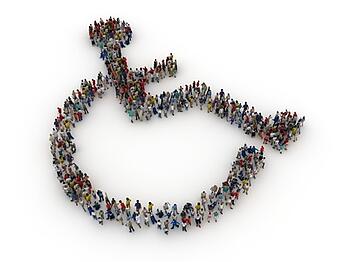Published on: July 28, 2015
 Perhaps you’ve been browsing our site and wondering to yourself what qualifies someone to receive disability benefits from Social Security. Well, that’s more complex a question than you might think at first.
Perhaps you’ve been browsing our site and wondering to yourself what qualifies someone to receive disability benefits from Social Security. Well, that’s more complex a question than you might think at first.
There are many reasons why someone might be able to receive benefits, as there are many different debilitating diseases, from arthritis to depression to cardiovascular problems. The problem is learning how to qualify for Social Security with these conditions. If you need more detailed lists of the qualifying symptoms, the Social Security Administration’s Blue Book is the primary resource that details what qualifies.
Let’s go over the qualifying conditions quickly. Please understand that this is neither a comprehensive list nor a guarantee that you’ll receive benefits. If you think you qualify, you should speak to a qualified professional to both ensure that you meet the requirements and help you apply for the benefits.
Arthritis
This one is a bit of a surprise. Arthritis is, in fact, the most common physical ailment that qualifies someone for disability benefits. It’s not that much of a stretch when you think about it: arthritis affects your ability to move because of damage to the cartilage in your joints. It can result from autoimmune response, wear and tear on the joints, a broken bone, or infection. Arthritis can be mild to severe, especially when it comes to rheumatoid arthritis. The disability here is obvious, as being unable to move rules out all physically-intensive labor and even mildly intensive labor if the arthritis is severe enough.
Related to this are other musculoskeletal issues. Bad joints, spine issues, broken bones that didn’t heal correctly, and other issues involving the muscle and skeleton can be debilitating. Walking with a bad hip or a bad spine is not only inadvisable but can be downright painful.
Cancer
Cancer, too, is a fairly obvious one. These diseases become more and more disabling in their progressed stages due to different effects that they have on the body, not to mention the effects of the medication on a person’s body. The chemoherapy and radiotherapy can sap the body of its strength, and there’s no guarantee that after the cancer goes into remission that the person will be able to work at all.
Cardiovascular Disease and Stroke
This one is more obvious. Physical labor involves a raised heart rate—unadvisable for anyone who has this condition. Overworking an ill heart can lead to major issues, and so it is on the SSA’s list. Stroke, too, can disable a person from working due to its ability to damage the brain. Both of these issues constitute one of the major causes of disability as well as one of the major medical care costs in the United States.
Part of the big concern around this is that medicine has progressed to the point that it has. People are living longer under the new medications, and more and more are surviving cancer—which is great! But it also leaves the survivors with a problem, especially if the cancer took away some of their ability to perform work, which is why it is becoming one of the biggest disabilities.
Mental Health Issues
It’s not just physical disabilities that keep people from working. Depression and bipolar disorder can be just as debilitating (or sometimes worse) than physical conditions. Depression and bipolar disorder both affect the ability of a worker to fully comply with the needs and desires of their employers, which is a major part of work. These conditions are definitely as valid a qualification for SSDI as physical disabilities.
Nervous System Disorders
Diseases like Alzheimer’s disease, Parkinson’s disease, ALS (Lou Gehrig’s Disease), epilepsy, and multiple sclerosis can all make it impossible to complete tasks, as they’re all diseases that involve the malfunction or degeneration of the nervous system—which can all affect motor skills, reaction time, or mental clarity (or any of the three in conjunction). If one can’t think or move without the risk of harming themselves or others, it is an obvious disability that must be addressed.
Diabetes
Diabetes isn’t what one might think of first when it comes to disability benefits. Its ability to hinder a worker isn’t often thought of, but with its ability to cause obesity and heart disease, it’s a big issue that needs constant medical attention, not to mention ready access to first aid. Because of its ability to cause major health problems and an inability to perform certain jobs, it does qualify some for SSDI in conjuction with other conditions..
Accidents
A common cause, accidents can result a person’s inability to move or work, which obviously qualifies someone for disability. Interestingly enough, this is at the bottom of the list because it’s one of the least common causes. It accounts for less than 10% of disability cases, which is strange to most people that aren’t on disability.
Again, this list isn’t even close to comprehensive, but these are some of the top reasons why a person might be on disability or might qualify for disability. While these lists are useful, there are smaller details and specific symptoms that must be present to qualify. If you need assistance with determining your eligibility, you should speak to a professional.

